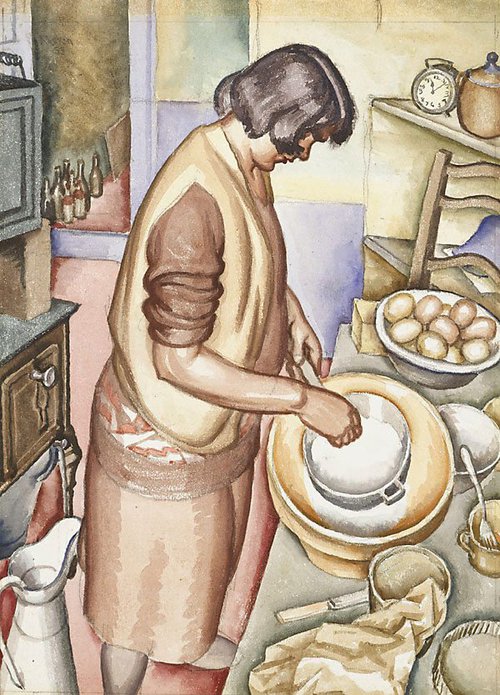Title
Self portrait
1941
Artist
-
Details
- Date
- 1941
- Media category
- Painting
- Materials used
- oil on canvas on composition board
- Dimensions
- 59.5 x 45.0 cm; 69.0 x 54.0 cm frame
- Signature & date
Signed and dated l.r. corner, black oil "Raokin. 41".
- Credit
- Purchased with support of the Art Gallery Society of New South Wales through the Elizabeth Fyffe Bequest 2023
- Location
- South Building, ground level, 20th-century galleries
- Accession number
- 107.2023
- Copyright
- © Estate of HF Weaver Hawkins
- Artist information
-
 Weaver Hawkins
Weaver Hawkins
Works in the collection
- Share
-
-
About
Weaver Hawkins produced an intimate series of paintings of himself and his family while living in Mona Vale on Sydney’s Northern Beaches. 'Self portrait' 1941 is painted in a style of exacting realism and makes prominent the artist’s damaged right hand. Hawkins was severely injured in July 1916 at Gommecourt, France during the First World War, damaging both hands and losing the function of his right. While he was determined not to be publicly defined by his injuries, in this private work Hawkins gives his wounded hand prominence in the imaging of his artistic identity.
'Self portrait' is a striking statement of his artistic vision of clarity and proportion, but also subverts simple compositional balance. Hawkins paints himself framed by a series of reflected, tilted and diagonal angles that skew the presence of a straightforward reality. The artist has toned down his usual deeply saturated palette, instead setting his image to the dim glow of indoor electric light that casts a yellowish tone to his features and instils a mood of disquiet.
Hawkins’ aesthetic of clarity and order ultimately serves to project a self-image of defiance. With the upward tilt and foreshortened ground of the composition, his expression appears confident, even triumphant.
-
Exhibition history
Shown in 3 exhibitions
H. F. Weaver-Hawkins (1893-1977), Macquarie Galleries, Canberra, Canberra, 30 Sep 1978–15 Oct 1978
Faces in the Crowd: An Exhibition of Paintings from the Collection of Woolloomooloo Gallery, Sydney, Stanthorpe Regional Art Gallery, Stanthorpe, 02 Nov 1992–28 Nov 1992
Faces in the Crowd: An Exhibition of Paintings from the Collection of Woolloomooloo Gallery, Sydney, Tweed Regional Gallery & Margaret Olley Art Centre, Murwillumbah, 09 Dec 1992–03 Jan 1993
Celebrating Paradise - The artist and the Northern Beaches: 1890-2000, Manly Art Gallery and Museum, Manly, 10 Dec 1999–30 Jan 2000
-
Bibliography
Referenced in 5 publications
-
Bonhams, The Fred and Elinor Wrobel collection: a curated salon, Sydney, 2023, 36, 37 (colour illus.), 43 (colour illus.), inside back cover (colour illus.). cat.no. 28, pictured in situ in the home of Fred and Elinor Wrobel on 43 and inside back cover.
-
Denise Mimmocchi, Look, 'Weaver Hawkins "Self portrait" 1941', pg. 68-69, Sydney, Aug 2023-Sep 2023, 68 (colour illus.), 69.
-
Katherine Roberts and Heather Johnson, Celebrating Paradise - The artist and the Northern Beaches: 1890 to 2000, Manly, 1999, 21.
-
Faces in the crowd: an exhibition of paintings from the collection of Elinor and Fred Wrobel, Woolloomooloo Gallery, Sydney, 1992. cat.no. 49
-
H. F. Weaver-Hawkins (1893-1977), Manuka, 1978. cat.no. 2
-




